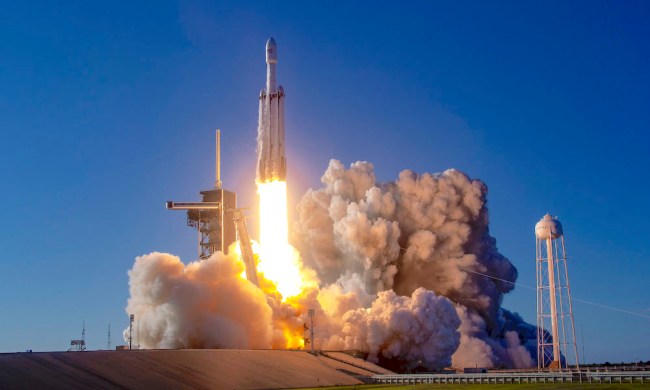Water is without a doubt mankind’s most precious resource. We literally can’t live without it. People underestimate this fact in developed regions where fresh water is ever flowing but in places where water is scarce — arid lands on Earth to the International Space Station — the importance of water is never overlooked.
Thing is, H2O is fairly plentiful in our Solar System. It’s commonly found as liquid or ice on asteroids, comets, a few moons, and even Mars. If only engineers could tap into water’s potential as a propellant, spacecraft would have an abundant and accessible fuel source stored on celestial bodies like outer space gas stations.
“Because water is everywhere, that opens the door to future missions that can refuel almost anywhere in the solar system.”
With this in mind, a team of researchers from Cornell University’s Cislunar Explorers have designed a water-propelled satellite with an unprecedented objective for a spacecraft its size: to orbit the Moon.
Under the guidance of NASA’s former chief technologist, Mason Peck, the Cislunar Explorers are vying for a top spot in NASA’s Cube Quest Challenge, which plans to grant a total $5.5 million to teams capable of designing, building, and delivering a small satellite (aka a CubeSat) to the Moon and beyond. The competition is now in the third of four rounds of the “Ground Tournament” before contenders launch into space on a mission to orbit our nearest neighbor.
Cube Quest challengers are, of course, vying for the prize money and esteem. But, along the way, teams like the Cislunar Explorers hope to show the potential of their sustainable solutions for future space travel. “Success in our mission will demonstrate the utility of water as rocket propellant,” Cislunar Explorers program manager, Kyle Doyle, told Digital Trends. “Because water is everywhere, that opens the door to future missions that can refuel almost anywhere in the solar system.”
Current missions to space are sort of like trips to the beach in that astronauts have to carry everything they need with them, otherwise they’d have to have supplies brought out by friends. But what if space travel could be more like camping? What if astronauts could carry just a few essentials and forage for resources on the way? This type of travel is known as “massless” and it may be the future of space exploration.
“All spacecraft so far have been launched with finite supplies,” Doyle said. “Imagine if when you bought a car, it came with one tank of gas, ever. If you wanted to drive somewhere else after you ran out, you would have to buy an entirely new car. That’s the current state of space travel. We want to change this, and make it possible for spacecraft to refuel like cars can. That would allow for sustained space exploration in ways that aren’t feasible right now.”
“We want to make it possible for spacecraft to refuel like cars can.”
Water’s abundance in the Solar System makes it an ideal propellant for massless missions — but before investors get behind the concept, engineers have to prove water can be converted to fuel.
To do this, the team fitted their CubeSat with electrolyzers which split H2O molecules into hydrogen and oxygen gas, a combustible mixture commonly used as rocket propellant. Since water is inflammable, the team faced another challenge: How to keep the liquid and gas from mixing? Their solution was spin.
By launching a single rectangular satellite which would later spring apart into two independent L-shaped CubeSats, the team thinks they have the ability to separate the water and gas via centrifugal force. “When the electrolyzers zap the water, the gases that are created bubble ‘up’ away from the water,” Doyle added. “As a bonus, we get two independent spacecraft to improve our chances of mission success.”

Which is, after all, the point. Testing new technologies is important but Doyle continued, “Achieving lunar orbit is the mission.” At least that’s how the team would claim the highest prize.
The Cislunar Explorers submit their proposal for the third of four Ground Tournaments this week. They topped the list in the second round, ahead of teams from MIT and UC San Diego. Phase three winners will be announced at the end of October. Once phase four is completed early next year, the top three teams with the best conceived design will earn their CubeSat a spot on a NASA SLS launch in early 2018.


